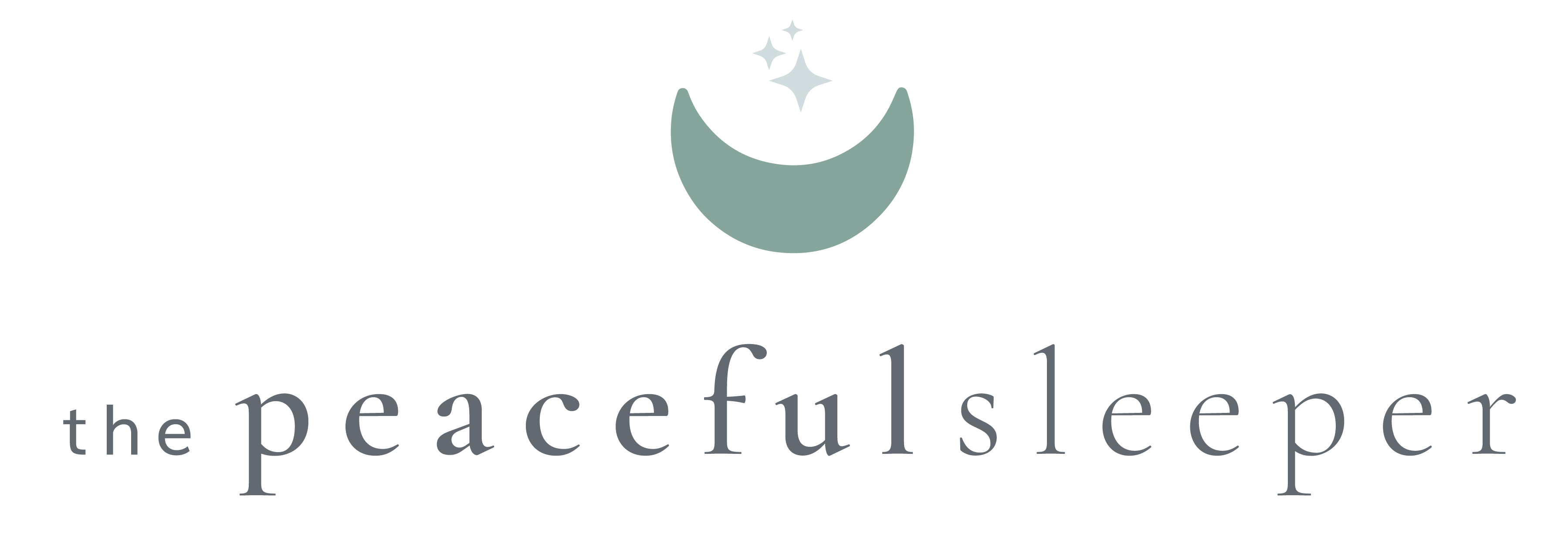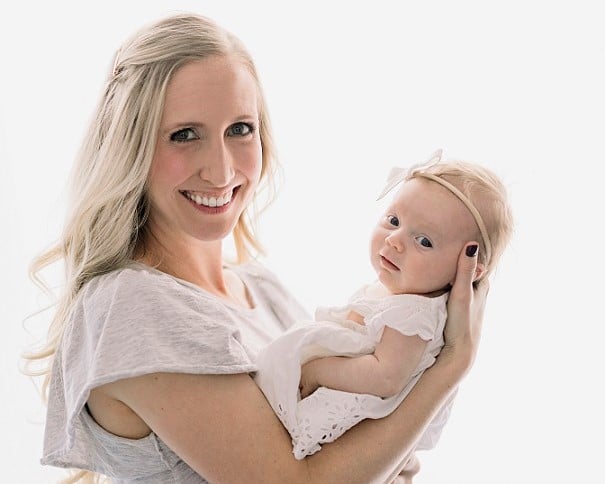Figuring out how to get a baby to sleep in their crib/bassinet can be tricky, but it’s not impossible! Contact naps can be incredible for so many reasons. At the same time, I know how overwhelming it can be once you’re nap-trapped. This week on the blog, I’m going to talk about:
Why does my baby ONLY sleep when being held?
How do I get my baby to sleep in their crib or bassinet?
What do I need to create the optimal sleep environment in my newborn’s crib or bassinet?
Let’s dive right in!
Why does my baby ONLY sleep when being held?
It is so so common for brand new newborns to wake up the second you try laying them down. Those first three months of your new baby’s life are often referred to as the “fourth trimester”. They’re still so used to being snuggled tight in the womb or your arms when you hold them for contact naps.
Transferring them from that warm, snug hold to a more firm, cool sleep space just feels different! During this “fourth trimester”, you do NOT need to worry about baby-wearing, contact naps, nursing your little one to sleep, etc.
Click here to watch “Fun Fact About Contact Naps” on Instagram.
One thing to remember…newborns are VERY active sleepers. This can look like squirming around in their sleep, maybe having their eyes somewhat open, and even letting out a small cry or grunt. If you set your baby down and they seem to be waking up, try giving them two to five minutes to resettle, grunt, toot, and even fuss a little to be sure they are actually waking up. So many times, they just need that minute to resettle!
Click here for an example of what active sleep in newborns looks like on Instagram.
How do I get my baby to sleep in their crib or bassinet?
Here are my top 5 tips for getting a baby to sleep in their crib or bassinet:
1. Prevent Overtiredness
The trick to preventing overtiredness is to follow age-appropriate wake windows AND watch for sleepy cues to know when your baby’s optimal sleep times are.
Click here to check out this full post (“What is ‘overtired?’”) on Instagram.
Here are the average wake windows based on age:
| Age | Number of Naps Per Day | Wake Window Between Naps | Wake Window Before Bed |
| 0-3 Months | 4-7 | 60-90 min | 1-2 hours |
| 4 Months | 4 | 90 min | 2 hours |
| 5 Months | 3 | 2 hours | 2.5 hours |
| 7 Months | 2 | 2-3 hours | 4 hours |
| 14 Months | 1 | 5 hours | 5 hours |
Remember, every baby is unique and these are just averages. Some babies have higher or lower sleep needs than others. I’ve got an entire blog post with everything you need to know about overtiredness and how to prevent it!
2. Rule Out Any Pain or Discomfort
If you are noticing that your baby does not like to lay flat while sleeping, my first suggestion is to rule out tummy trouble – the most common culprit of discomfort.
Tummy troubles can mean:
We want to get to the bottom of baby’s discomfort so we can best meet their needs! One tip is to keep your baby upright for about 15 minutes after a feeding and before you lay them back down. If you are working about YOU falling asleep in an unsafe position while holding them, you may want to try walking around with them to help keep yourself awake, as unpleasant as it might be for you.
This won’t last forever! If tummy troubles don’t seem to be the main issue, reach out to your pediatrician or specialist to get to the root of any pain or discomfort.
Click here to watch “My Baby Won’t Sleep On Their Back” on Instagram
3. Put Them Down in a Side Position
Next time you lay your sleeping newborn into their crib or bassinet, try putting them down on their side before gently rolling them onto their back. This really helps with preventing their startle reflex from waking them back up!
Click here to watch a tutorial on how to lay your baby down without waking them up on Instagram.
4. Consider Using a Swaddle
Having your baby sleep in a nice, snug swaddle helps mitigate the Moro reflux. This is what causes newborns to jerk and squirm, which results in them waking themselves sometimes right after we put them down.
Remember, (both arms-down swaddles) are only safe to use BEFORE your baby shows signs of rolling. Once your baby shows signs of rolling, it’s time to make the transition out of the swaddle.
5. Keep Practicing!
Sometimes, this just takes practice! You can even start with smaller steps, and try transferring your baby to their crib or bassinet for the first sleep cycles of their naps, and then extending their nap with a contact nap if they need.
What do I need to create the optimal sleep environment in my newborn’s crib or bassinet?
Creating the perfect sleep environment for your little one is simple, and is one of the first steps in helping them get the great sleep they need.
Newborns need to sleep on the flat, firm surface of their crib or bassinet. The American Academy of Pediatrics (AAP) recommends that the surface be free of any positioning or soothing products including pacifiers, blankets, stuffed animals, pillows, etc. for the first year.
5 Other Essentials for The Optimal Sleep Environment:
- Dark environment
- Sound machine
- Swaddle
- Cool temperature
- Separate sleep space
Click here to watch “5 Essentials For The Optimal Sleep Environment” on Instagram.
Head here to learn about building the optimal sleep environment for your little one.
Recap on How to Get a Baby to Sleep in Their Crib
Figuring out how to get a baby to sleep in the crib or bassinet is totally achievable with some patience and the right strategies. You can 100% set the foundation for great sleep even before formal sleep training/sleep learning.
If you need support with your baby’s specific sleep needs or have any other questions about navigating sleep with your newborn, we would love to work with you. Click here to hop on a call with one of our AMAZING Certified Pediatric Sleep Consultants!
Whether your little one is a newborn (0-4 Months Content Library), 4-24 months (4-24 Months Content Library), or a toddler (2-5 Years Content Library), we have the resources you need to get your family the sleep you all deserve!









0 Comments